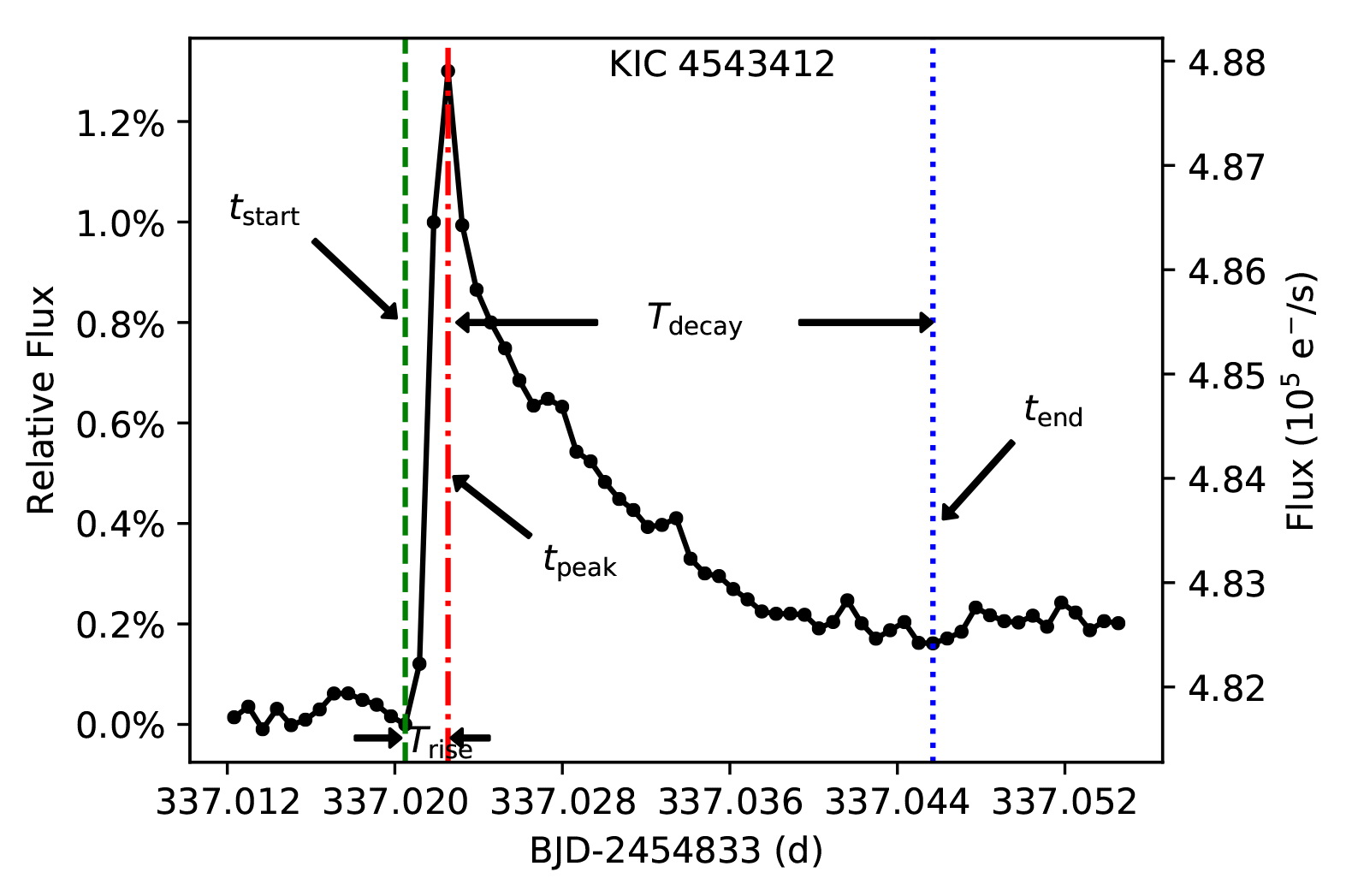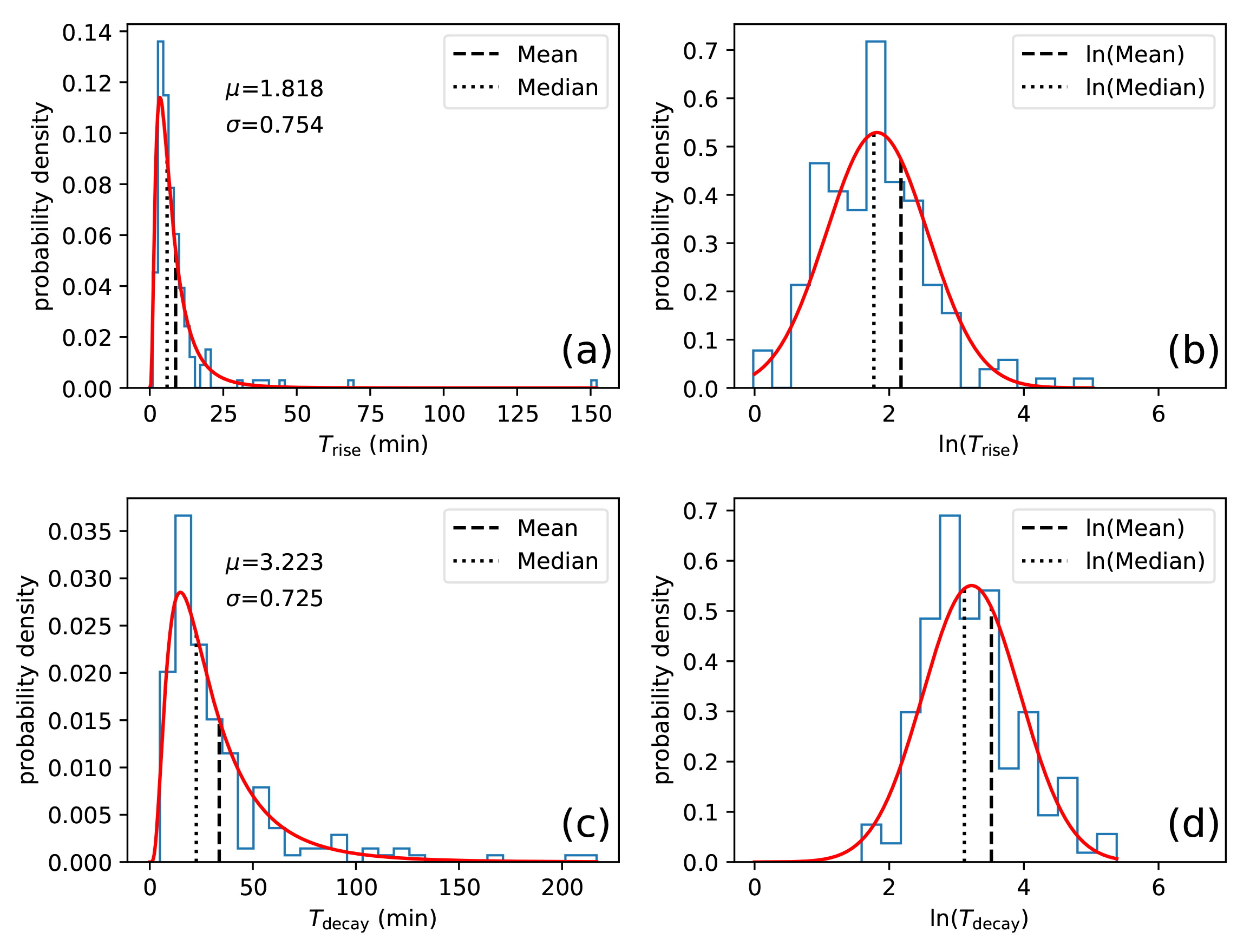Flare is a phenomenon of a sudden brightening on the surface of the Sun. Akin to solar flares, the phenomenon was also discovered on the stars other than the Sun. However, only very few stellar flare cases had been identified, and even fewer for Sun-like stars.
In 2009, the Kepler space telescope was launched. This mission has observed the light curves of a large volume of stars. These light-curve data provide a massive number of stellar flares.
Based on the light-curve data of Kepler, a research team led by Prof. HE Han from the National Astronomical Observatories of the Chinese Academy of Sciences (NAOC) has revealed the characteristic time of stellar flares on Sun-like stars.
The study was published in Monthly Notices of the Royal Astronomical Society on June12.
A flare has two distinct phases: the rise phase and the decay phase, which can be seen from the light curves of solar flares. "The rise phase generally represents a rapid release of magnetic field energy through a magnetic reconnection process, while the decay phase generally demonstrates a prolonged term comprising the whole cooling process," said Prof. HE, a corresponding author of the study. The timescales of the flare rise phase and decay phase are important in flare study.

The research selected star samples that have the stellar parameters approximate to the Sun and identified 184 stellar flares from the short-cadence (SC) light curves of the Sun-like stars. The duration times of the flare rise phase and decay phase were determined for each flare sample based on the flare light-curve profile, and then a statistical analysis was performed on the obtained rise times and decay times of the flare samples.
"For the stellar flares on Sun-like stars, the median values of the flare rise time and decay times are 5.9 min and 22.6 min, respectively. These time values for stellar flares are similar to the timescale of solar flares, which supports the idea that stellar flares and solar flares have the same physical mechanism," said Dr. YAN Yan from NAOC, the other corresponding author of the study.
The researchers also found that both the rise time and the decay time of the stellar flares follow a lognormal distribution, showing a peak-shaped head and a long tail.
The statistical results obtained for Sun-like stars can be a benchmark of flare characteristic times when compared with other types of stars.
In addition, stellar flare radiation is a key factor in the habitability of exoplanets within a stellar system. The result obtained in this work can act as an important input element for analyzing the impact of stellar flares to the atmosphere, space environment, and habitability of exoplanets.







